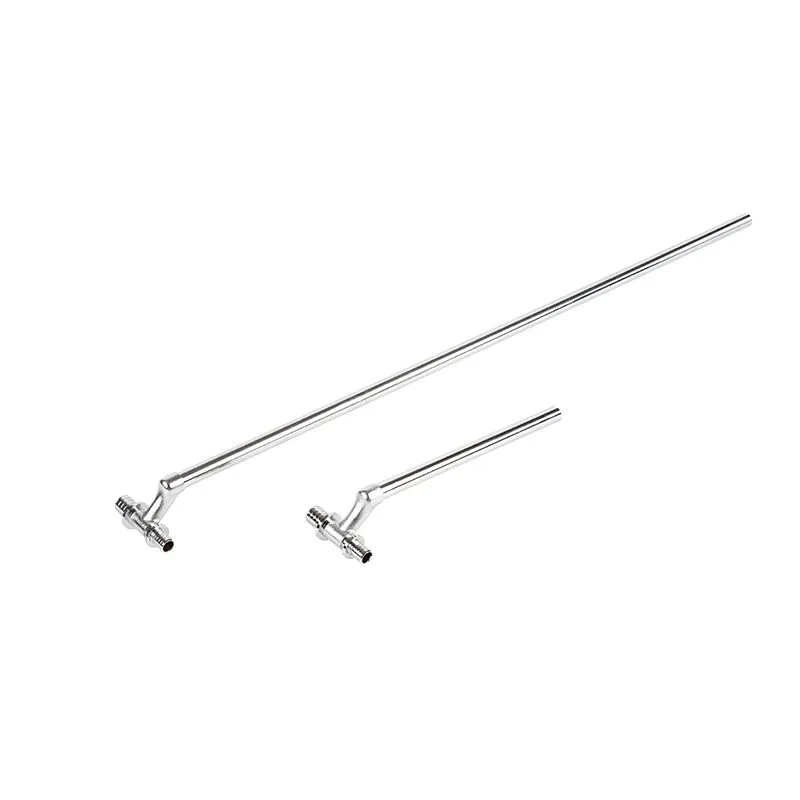Advantages of Brass PEX Fittings
2024-07-31
Brass PEX fittings are used in plumbing systems to connect PEX (cross-linked polyethylene) piping to other components or to create various junctions in the piping network. Brass is chosen for its durability and resistance to corrosion, making it a popular choice for both residential and commercial plumbing applications. Here are the key aspects of brass PEX fittings:
Key Features
1. Material
- Brass: An alloy of copper and zinc, brass is known for its strength, corrosion resistance, and longevity. It is often used in plumbing fittings for its reliability in handling water flow and pressure.
2. Types of Brass PEX Fittings
- Barbed Fittings: Designed with barbs that grip the inside of the PEX pipe, these fittings are secured using a clamp or crimp ring.
- Compression Fittings: Use a compression ring (or ferrule) and nut to secure the PEX pipe. These fittings are easier to install and remove compared to barbed fittings.
- Push-to-Connect Fittings: Feature a push-fit design that does not require additional tools or clamps. The PEX pipe is pushed into the fitting, and internal mechanisms secure it.
3. Applications
- Residential Plumbing: Connecting PEX pipes in water distribution systems for hot and cold water.
- Commercial Plumbing: Used in various commercial and industrial applications due to their strength and durability.
- Heating Systems: Often used in radiant floor heating systems where PEX pipes are used to distribute hot water.
4. Sizes and Configurations
- Pipe Sizes: Available in various sizes to fit different PEX pipe diameters (e.g., 1/2 inch, 3/4 inch, 1 inch).
- Fitting Types: Includes tees, elbows, couplings, adapters, and reducers to connect or change the direction of PEX pipes.
Advantages of Brass PEX Fittings
1. Durability: Brass fittings are robust and resistant to physical damage and wear, making them suitable for high-pressure applications.
2. Corrosion Resistance: Brass is resistant to corrosion and rust, extending the lifespan of the fittings and ensuring reliable performance.
3. Ease of Installation: Depending on the type, brass PEX fittings can be installed quickly and easily with minimal tools.
4. Temperature Tolerance: Brass fittings can handle a wide range of temperatures, making them suitable for both hot and cold water applications.
Installation Tips
1. Proper Fitting Selection: Choose the correct type and size of fitting for the PEX pipe and the intended application.
2. Tools and Equipment: Use the appropriate tools for installation, such as crimping tools for barbed fittings or wrenches for compression fittings.
3. Pipe Preparation: Ensure the PEX pipe is cut squarely and properly prepared before inserting it into the fitting.
4. Secure Connections: For barbed fittings, use clamps or crimp rings to ensure a tight seal. For compression fittings, tighten the nut sufficiently to compress the ring around the pipe.
5. Leak Testing: After installation, check all connections for leaks and ensure the system is functioning correctly.
Considerations
1. Compatibility: Ensure that the brass fittings are compatible with the specific type and size of PEX pipe used in your plumbing system.
2. Quality: Use high-quality brass fittings to avoid issues such as leaks or premature failure.
3. Regulations: Follow local building codes and regulations for plumbing installations to ensure compliance and safety.
Summary
Brass PEX fittings are essential components in modern plumbing systems, offering durability, corrosion resistance, and ease of installation. They are suitable for a wide range of applications, including residential, commercial, and heating systems. By selecting the appropriate fittings and following proper installation procedures, you can ensure a reliable and efficient plumbing system.



